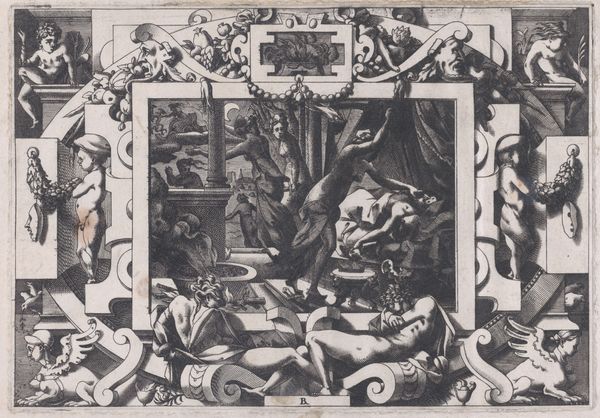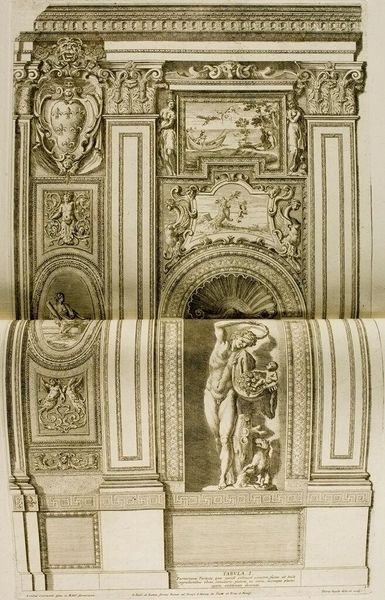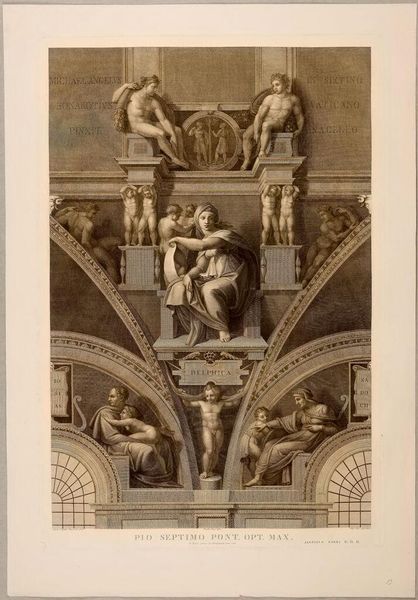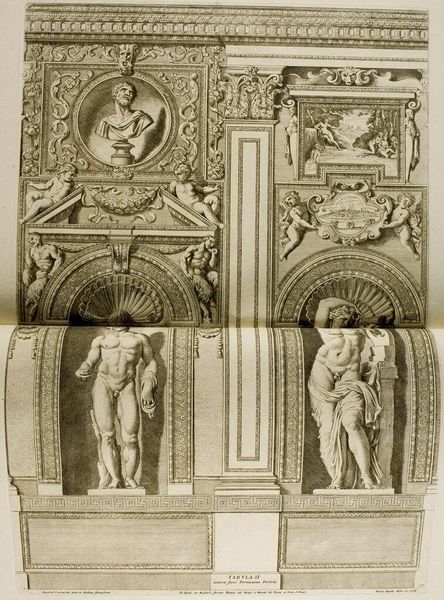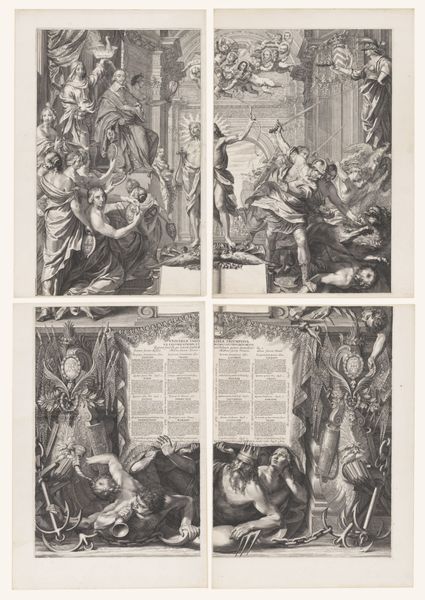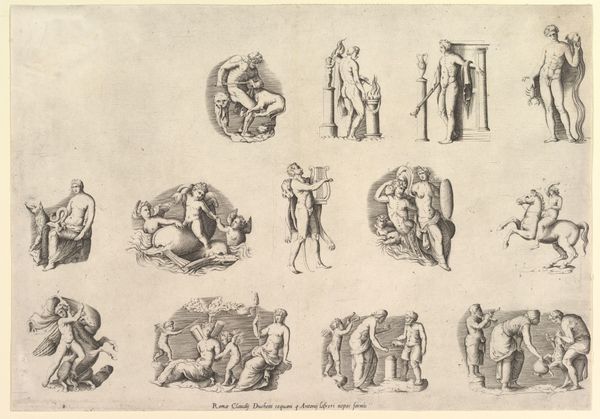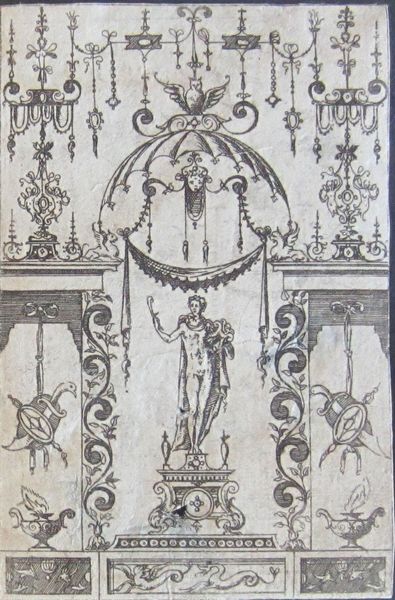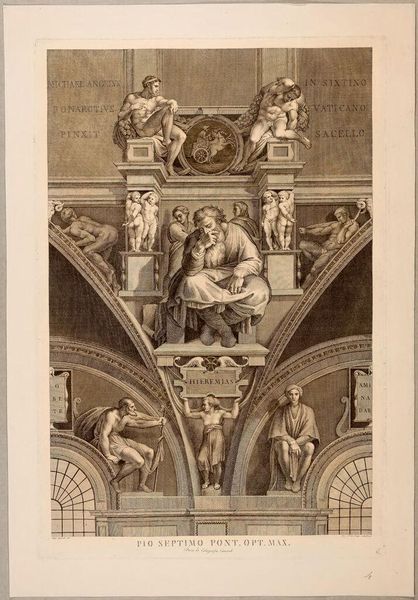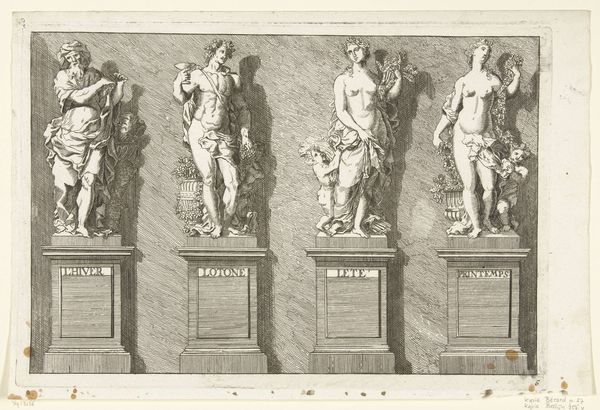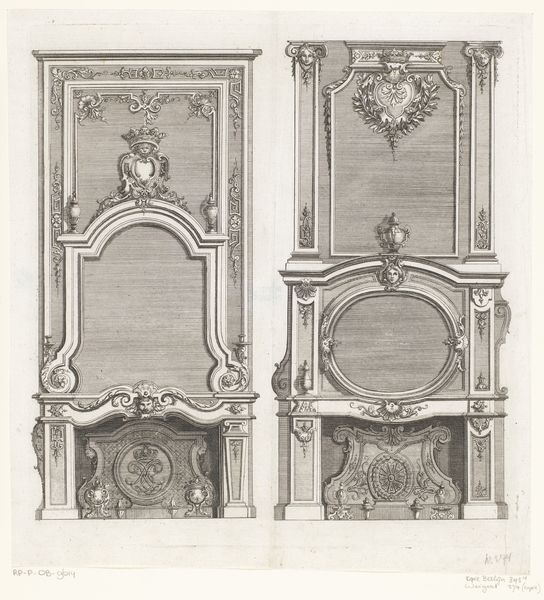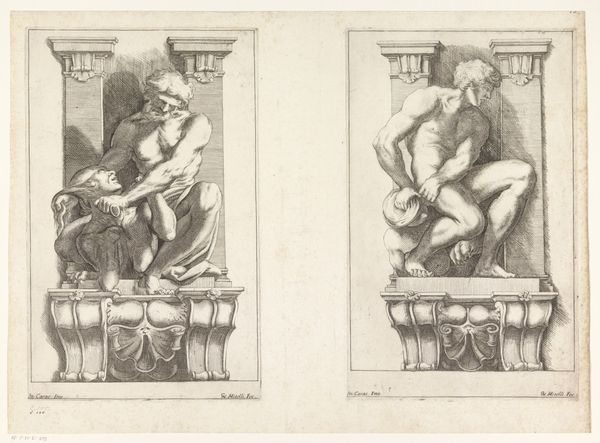
carving, marble
#
medieval
#
carving
#
narrative-art
#
figuration
#
underpainting
#
christianity
#
marble
#
early-renaissance
#
mixed media
#
angel
Copyright: Public domain
This is a detail of Jan van Eyck's Madonna of Canon van der Paele, painted in the 1430s with oil on panel. Look closely at the carved architectural details surrounding the figures. These grisaille sculptures aren't mere decoration; they are painted illusions. Van Eyck, with immense labor, sought to replicate the appearance of stone carving. The oil medium allowed for remarkable control of light and shadow, creating convincing three-dimensionality. Van Eyck’s mastery of oil paint is on full display here, creating the illusion of textures, weight, and form. He employed techniques used by sculptors and artisans, revealing his deep understanding of materiality. The artist's work invites reflection on the value of labor, and the distinction between different skilled practices. Van Eyck challenges our perception of what painting can achieve. Through materiality, making, and social context, he elevates painting beyond simple representation, creating an experience which transcends traditional definitions of art and craft.
Comments
No comments
Be the first to comment and join the conversation on the ultimate creative platform.

